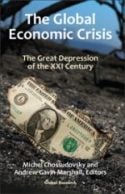Do Financial Markets Still Exist?

For many decades the Federal Reserve has rigged the bond market by its purchases. And for about a century, central banks have set interest rates (mainly to stabilize their currency’s exchange rate) with collateral effects on securities prices. It appears that in May 2010, August 2015, January/February 2016, and currently in February 2018 the Fed is rigging the stock market by purchasing S&P equity index futures in order to arrest stock market declines driven by fundamentals, and to push prices back up in keeping with a decade of money creation.
No one should find this a surprising suggestion. The Bank of Japan has a long tradition of propping up the Japanese equity market with large purchases of equities. The European Central Bank purchases corporate as well as government bonds. In 1989 Fed governor Robert Heller said that as the Fed already rigs the bond market with purchases, the Fed can also rig the stock market to stop price declines. That is the reason the Plunge Protection Team (PPT) was created in 1987.
Looking at the chart of futures activity on the E-mini S&P 500, we see an uptick in activity on February 2 when the market dropped, with higher increases in future activity last Monday and Tuesday placing Tuesday’s futures activity at about four times the daily average of the previous month. Futures activity last Wednesday and Thursday remained above the average daily activity of the previous month, and Friday’s activity was about three times the previous month’s daily average. The result of this futures activity was to send the market up, because the futures activity was purchases, not sales.
Who would be purchasing S&P equity futures when the market is collapsing from under them? The most likely answer we can come up with is that the Fed is acting for the PPT. The Fed can actually stop a market decline without purchasing a single futures contract. All that has to happen is that a trader recognized as operating for the Fed or PPT enters a futures bid just below the current price. The traders see the bid as the Fed establishing a floor below which it will not let the market fall. Expecting continuing declines to make the bid effective, they front-run the bid, and the hedge funds algorithms pick it up, and up goes the market.
Is there another explanation for the shift in the market from decline to rise? Are retail investors purchasing dips? Not according to this report in Bloomberg, that last week a record $23.6 billion was removed from the world’s largest ETF, the SPDR S& 500 index fund. Here we see retail investors abandoning the market.
If central banks can produce zero interest rates simultaneously with a massive increase in indebtedness, why can’t they keep equity prices far above the values supported by fundamentals? As central banks have learned that they can rig financial asset prices to the delight of everyone in the market, in what sense does capitalism, free markets, and price discovery exist? Have we entered a new kind of economic system?
*
This article was originally published by Paul Craig Roberts Institute for Political Economy.
The Global Economic Crisis
The Great Depression of the XXI Century
Global Research
Each of the authors in this timely collection digs beneath the gilded surface to reveal a complex web of deceit and media distortion which serves to conceal the workings of the global economic system and its devastating impacts on people’s lives.
In all major regions of the world, the economic recession is deep-seated, resulting in mass unemployment, the collapse of state social programs and the impoverishment of millions of people. The meltdown of financial markets was the result of  institutionalized fraud and financial manipulation.
institutionalized fraud and financial manipulation.
The economic crisis is accompanied by a worldwide process of militarization, a “war without borders” led by the U.S. and its NATO allies.
Click to order directly from Global Research
This book takes the reader through the corridors of the Federal Reserve, into the plush corporate boardrooms on Wall Street where far-reaching financial transactions are routinely undertaken.
“This important collection offers the reader a most comprehensive analysis of the various facets – especially the financial, social and military ramific ations – from an outstanding list of world-class social thinkers.”
ations – from an outstanding list of world-class social thinkers.”
-Mario Seccareccia, Professor of Economics, University of Ottawa
“In-depth investigations of the inner workings of the plutocracy in crisis, presented by some of our best politico-economic analysts. This book should help put to rest the hallucinations of ‘free market’ ideology.”
-Michael Parenti, author of God and His Demons and Contrary Notions
“Provides a very readable exposé of a global economic system, manipulated by a handful of extremely powerful economic actors for their own benefit, to enrich a few at the expense of an ever-growing majority.”
-David Ray Griffin, author of The New Pearl Harbor Revisited
Click to order directly from Global Research

